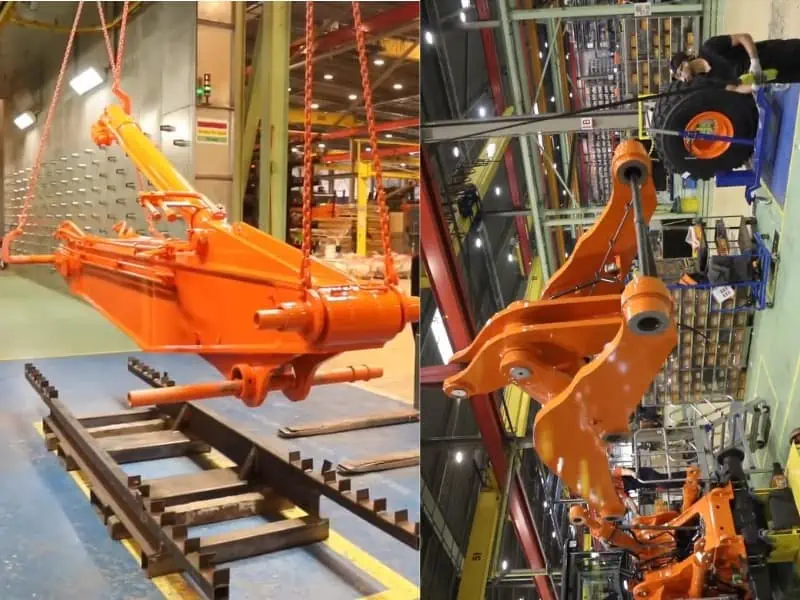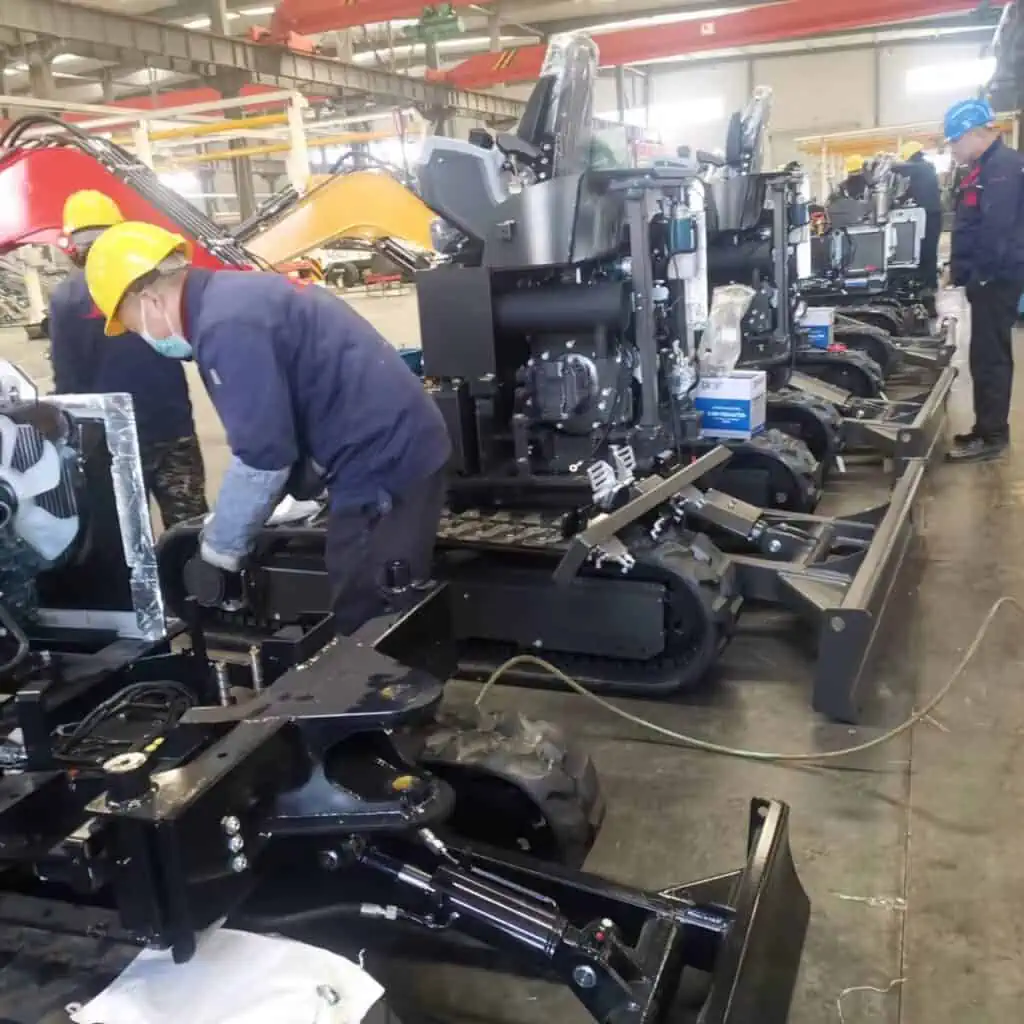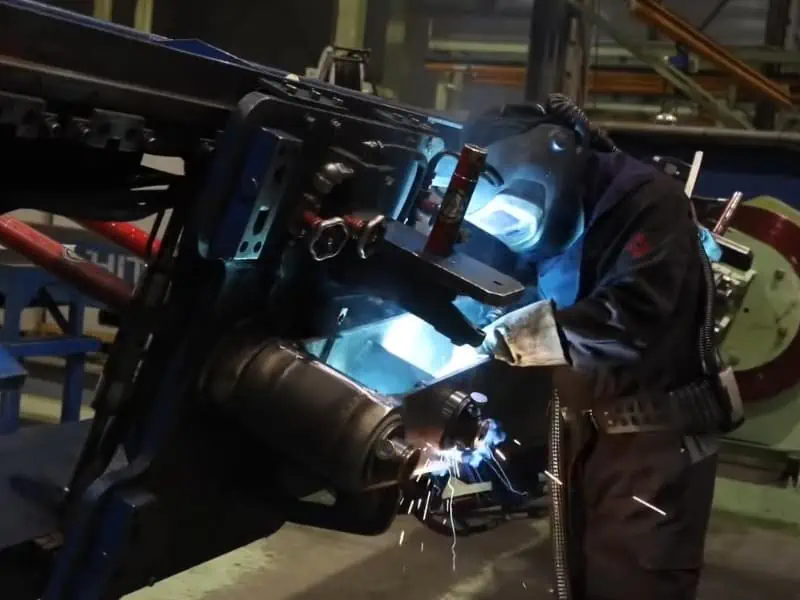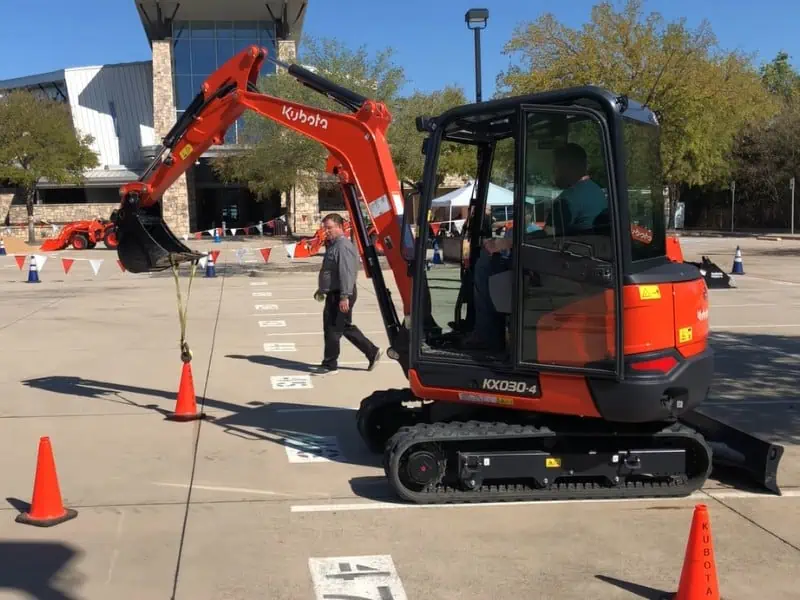The use of compact excavator is increasing fastly; it is also known as mini excavators or small excavators. It is a type of construction equipment used for digging and excavation. Compact excavators are smaller than traditional excavators and more versatile and maneuverable, making them ideal for use in tight spaces, urban areas, and residential projects. The manufacturing process of a compact excavator involves several stages, including design and prototyping, component production, assembly, and testing.
جدول المحتويات
تبديلProcess of a compact excavator manufacturing
Design and Prototyping:
The first stage in the manufacturing process of a compact excavator is design and prototyping. This stage involves developing the excavator’s design, including the machine’s size, shape, and functionality. The design team works closely with engineers and other experts to create a functional prototype that meets the end user’s requirements. The design of an excavator is a highly complex process.

The fundamental knowledge needed for designing a mini excavator is connected with the construction of these machines. However, it is also important to obtain knowledge about hydraulic drive and automation systems (both in terms of construction and practical use). Due to the specific nature of mini excavator operation, selective knowledge of civil engineering is required for proper compact excavator design.
Due to the number of active mini excavator manufacturers on the market, the appropriate design may decide the possible purchase of the product. The same conclusion applies to ergonomics. Implicating thoughtful solutions to the design will open the way for promoting it as a functional and user-friendly object.
To know what is currently considered attractive and to be able to sell it effectively, the designer needs to have certain marketing skills. It is, in part, used at every level of design. Mainly for calculating the budget for purchasing parts and materials, design, and production.
Component Production:

Once the design and prototyping stage is complete, the next stage is component production. During this stage, individual parts and components of the excavator are manufactured using various techniques, such as casting, forging, and stamping. These components include the hydraulic system, the engine, the transmission, the undercarriage, the cab, and the digging arm.
Excavators are used for a wide range of jobs. A compact excavator is a relatively complex structure. It is defined by several standards that standardize its construction, design process, operation, and industry definitions.
Size and weight
The size and weight are determined by several factors during the compact excavators manufacturing process, including:
Purpose and intended use:The size and weight of a compact excavator must match the intended use and purpose. For example, a compact excavator used for residential construction will have different specifications than one used in a mining application.
Engine specifications:The engine specifications, such as horsepower and torque, help determine the size and weight of a compact excavator.
Hydraulic system:The size and weight of the hydraulic system, including pumps, valves, and cylinders, affects the overall size and weight of the compact excavator.
Arm and boom design:The design of the arm and boom, including the components’ length and thickness, affects the compact excavator’s size and weight.
Chassis design:The design of the chassis, including the size and thickness of the frame and undercarriage components, affects the size and weight of the compact excavator.
Bucket and attachment specifications:The specifications of the bucket and other attachments, such as their size, weight, and capacity, affect the size and weight of the compact excavator.
Choose the type of engine.
The type of engine chosen for a small excavator depends on several factors. The engine type must match the compact excavator’s power requirements regarding horsepower and torque. The engine must be fuel-efficient to reduce operating costs and minimize environmental impact. Engine must meet current emissions regulations to ensure that it operates within legal limits. Such as the North-American countries usually require the EPA Tier 4 regulations. While the European countries need Stage 5 engines.
It must be low-maintenance and reliable to minimize downtime and maintenance costs. Based on these factors, compact excavators typically use one of two engines:diesel enginesand hybrid diesel-electric engines. Diesel engines are traditional internal combustion engines commonly used in heavy equipment because of their durability and high power output.
Hybrid diesel-electric engines combine a diesel engine with an electric motor to improve fuel efficiency and reduce emissions. The specific type of engine chosen for a compact digger depends on the specific requirements of the machine and the preferences of the manufacturer and end user.

General considerations compact excavator manufacturing
1. Purpose of the machine: universal mini or small excavator.
2. Justification of technical rationale: designing a
universal mini-excavator.
3. Economic rationale: designing a low-cost mini
excavator.
4. Performance requirements: operational efficiency
5. Handling requirements: standard.
6. Durability requirements: all systems with a service
life ≥ 25000 operating hours.
7. Compliance with national and international
standards: full.
8. Production range: international.
9. Production volume: mass.
10. Content of semi-finished and finished products in the design: minority.
Decide on size and weight.
The size and weight of a compact excavator manufacturing are determined by several factors. The size and weight of a compact digger must match the intended use and purpose. For example, a compact excavator used for residential construction will have different specifications than one used in a mining application.
The size and weight of the hydraulic system, including pumps, valves, and cylinders, affect the overall size and weight of the compact excavator. Furthermore, the design of the arm and boom, including the components’ length and thickness, affects the compact excavator’s size and weight.
The design of the chassis, including the size and thickness of the frame and undercarriage components, affects the size and weight of the compact excavator. These specifications of the bucket and other attachments, such as their size, weight, and capacity, affect the size and weight of the compact excavator.
Choose the type of track.
Compact excavators typically use one of two types of tracks: steel tracks and rubber tracks. Steel tracks are made of steel links and are commonly used in harsh, rocky environments because of their durability and stability. Rubber tracks are made of rubber and steel and are commonly used in softer soil conditions because of their better traction and ability to reduce damage to the terrain.
Select the type of attachment.
The attachment must match the intended use and purpose of the compact excavator, whether it’s digging, grading, or demolition work. The attachment must be compatible with the compact excavator’s size, weight, and hydraulic system. The specific type of attachment chosen for a compact excavator depends on the job’s requirements and the operator’s preferences.
Welding of frame

The welding of the frame is an important step in the manufacturing process of a compact excavator. The frame is responsible for providing structural support and stability to the machine, and the welding quality is critical to ensuring that the compact excavator can operate safely and effectively. Bucket size and capacity:
The bucket’s size and capacity must match the job’s requirements, whether a standard digging bucket or a specialized bucket for grading or demolition work. The welding quality is critical to the overall quality and performance of the compact excavator, and the manufacturer must follow strict standards and procedures to ensure that the frame is strong, stable, and safe for use.
There are several types of welding techniques used in the manufacturing process of compact excavators, but two of the most commonly used are:
MIG Welding (Metal Inert Gas Welding): MIG welding, also known as Gas Metal Arc Welding (GMAW), is a common welding technique that uses a wire feeder and a shielding gas to join two metal parts. MIG welding is often used for mild welding steel and is known for its high speed and versatility.
TIG Welding (Tungsten Inert Gas Welding): TIG welding, also known as Gas Tungsten Arc Welding (GTAW), is a welding technique that uses a tungsten electrode and a shielding gas to join two metal parts. TIG welding is often used for thinner metals, such as aluminum, and is known for its high precision and clean, visually appealing welds.
Assembly:
After the components are manufactured, the next stage is assembly. The individual parts and components are brought together during this stage to form a complete mini excavator. The assembly process involves precise alignment and connection of the various components, including the hydraulic system, engine, transmission, undercarriage, cab, and digging arm.
The assembly line typically operates on a lean manufacturing system, emphasizing efficiency and minimizing waste.
Testing of compact excavators:

The final stage in the process of compact excavator manufacturing is testing. During this stage, the excavator is put through a series of tests to ensure that it meets all the necessary performance criteria. These tests include hydraulic pressure, engine performance, and digging tests. Once the excavator passes all the necessary tests, it is ready to be shipped to dealers and end-users.
Conclusion Compact Excavator Manufacturing
In conclusion, the manufacturing process of a compact excavator is a complex and multi-stage process that involves design and prototyping, component production, assembly, and testing. The result is a versatile and high-performing construction machine capable of handling a wide range of digging and excavation tasks.
For more information contact us now. As a reliable compact excavator manufacturer, we can always provide you with the best suggestions.
